The best gifts to upgrade your grad’s tech setup
All products recommended by Engadget are selected by our editorial team, independent of our parent company. Some of our stories include affiliate links. If you buy something through one of these links, we may earn an affiliate commission.
Every spring, a new class of graduates is unleashed on the world, many of them carrying gadgets that have been put through the ringer over the years. Graduation is traditionally a big time for gift-giving — so if you know someone who is heading out into the real world who could use an upgrade after four (or more!) long years of higher education, here’s a host of options that’ll be a serious improvement over their trusted but beat-up tech.
Laptops
Apple
As useful as tablets and smartphones are, nothing beats a traditional laptop when you really want to get things done. It’s also a very personal purchase, so you’ll want to know if the recipient prefers Windows, Mac or Chrome OS before you pull the trigger. But once you have that settled, these laptops are some of the best and most well-rounded options on the market. Unless the person you’re shopping for has some very specific needs, one of these machines will probably fit the bill.
For years, we’ve considered Dell’s XPS 13 to be the best overall Windows laptop, and that hasn’t changed. At this point, Dell has almost perfected its industrial design: it’s thin and light, but not at the expense of power or battery life. The keyboard and display are excellent, and you can get impressive specs without breaking the bank.
If you want to gift your grad something that’ll last for years, we recommend the configuration with Intel’s 11th-generation Core i5 processor, 16GB of RAM and 512GB of storage. That also includes a UHD+ resolution touchscreen, which works out to 3,840 x 2,400. Right now, that version sells for $1,469.99 direct from Dell.
For someone who’s a gamer, though, we recommend going in a different direction. The ASUS ROG Zephyrus G14 is an excellent laptop that combines relative portability (3.75 pounds and a 14-inch screen) with serious power. In our review we said that the laptop was incredibly compelling, even if it’s more expensive than it used to be. It has a powerful AMD processor and graphics card coupled with a great display, comfortable keyboard, spacious trackpad and solid design. It’s not a champ on battery life, but we got seven hours of non-gaming use out of it – pretty decent considering the specs.
As is usually the case with ASUS products, you can get the Zephyrus G14 in a wide variety of configurations, but one we’d recommend comes from Best Buy. The $1,649.99 model includes an AMD Ryzen 9 6000 Series processor, 16GB of RAM, an AMD Radeon RX 6700S graphics card, 1TB of storage, and a 14-inch 2,560 x 1,400 display with a 120Hz refresh rate. That’ll be plenty to handle modern gaming as well as all the “real life” tasks that come with being out of school.
Buy XPS 13 at Dell starting at $1,195
Buy ASUS ROG Zephyrus G14 at Best Buy – $1,649
For people who prefer a Mac, the MacBook Air is usually our go-to recommendation, but not this year. While there’s nothing wrong with the current Air, Apple hasn’t updated it in more than 18 months – if you buy one now, it’ll likely be replaced with something better soon. With that in mind, a great upgrade pick for a Mac user is the 14-inch MacBook Pro.
Apple completely redesigned the MacBook Pro last fall, adding back crucial ports like the HDMI slot and SD card reader. The company also removed the Touch Bar and put in a full-size function key row with Touch ID. There’s a lot more worth talking about than just what Apple fixed compared to the previous MacBook Pro, though.
The new model has an outstanding 14-inch mini-LED display (as long as you can get past the camera notch), a 1080p webcam, a great keyboard and trackpad and powerful internals that should make the MacBook Pro capable for years to come. Most people will probably be set with the $1999 configuration, which includes Apple’s M1 Pro chip, 16GB of RAM and 512GB of storage space. Apple’s custom silicon has been extremely impressive, boasting both extreme speed and efficiency that lets you use this laptop away from a charger longer than almost any other computer on the market.
Given how dominant a force Chromebooks are in education, it’s entirely possible that someone just finishing school might want to continue using Chrome OS. Fortunately, there are lots of premium Chromebooks that are well-designed and capable enough to last for years. One of our favorites is Acer’s Chromebook Spin 713. It has a screen with a taller 3:2 aspect ratio, which means you’ll see more of a webpage or document you’re working on without having to scroll. Add in a solid keyboard and trackpad, as well as powerful hardware (Intel’s 11-generation Core i5 processor) and you have a Chromebook that doesn’t offer many compromises. The battery life could be longer, but that’s the only major knock against it.
Buy MacBook Air at Amazon starting at $999
Buy 14-inch MacBook Pro at Amazon starting at $2,449
Buy Acer Chromebook Spin 713 at Amazon – $369
Tablets
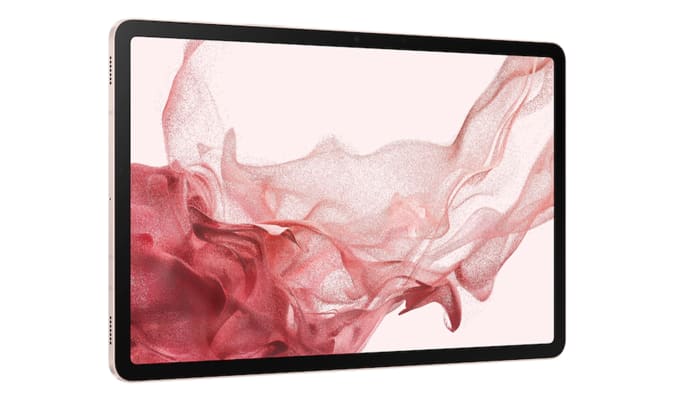
Samsung
When thinking about tablets, put aside the question of whether or not they can replace laptops, and focus on what they do best. They can be a great option for getting work done, engaging your creative side with art and music-making apps or just enjoying movies and games. For the vast majority of people, Apple’s iPad is the only tablet worth considering, even if they don’t otherwise use Apple products. That’s thanks to time-tested, reliable hardware and a massive software library with hundreds of thousands of apps optimized for the iPad’s larger screen.
As for which iPad is the best, the iPad Air is probably the right choice for most – especially if you’re looking for a good graduation gift. While the basic iPad is a great value, you get a lot when you step up to the Air. Perhaps most importantly, the Air has Apple’s M1 chip, the same one that’s in the iPad Pro and numerous Macs. This means the Air is extremely fast and one of the more future-proof products Apple makes.
The rest of the iPad Air’s hardware is also impressive for the price. It has a large 10.9-inch screen with thin bezels and an anti-reflective coating; the display is also laminated directly to the glass, so there’s no distracting gap beneath the surface. The Air also includes 64GB or 256GB of storage, 10 hours of battery life, support for the second-generation Apple Pencil and Magic Keyboard and an improved 12-megapixel front-facing camera. For $599, you’re getting almost everything that the iPad Pro offers without spending over $800.
However, if you’re shopping for an Android diehard, Samsung’s $700 Galaxy Tab S8 is an excellent choice. It features a high-resolution 11-inch screen with a 120Hz refresh rate, and has an S-Pen stylus included in the box. And while Android historically hasn’t been the best option for large-screen devices, Samsung’s Dex feature switches things up into a more desktop-like multi-window mode, which can be great for productivity. Samsung’s built-in apps that take advantage of the S-Pen are solid as well. You might have a hard time finding apps that are designed for the Tab S8’s larger screen, but if you’re buying this for someone familiar with Android, they’ll likely be aware of the trade-offs.
Buy iPad Air at Amazon – $599
Buy Galaxy Tab S8 at Samsung – $700
Smartphones
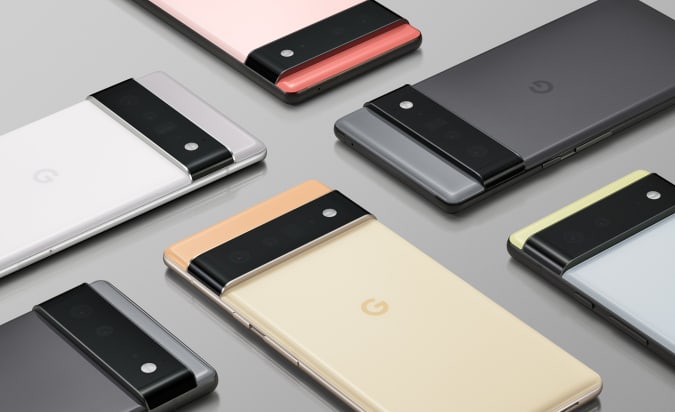
As useful as a laptop or tablet can be, chances are good that the most important computer most people own is their smartphone. And if you know someone who is still rocking the same device they brought to campus with them four years ago, they’ll definitely appreciate an upgrade. The good news is that it’s pretty easy to pick out a phone that’ll satisfy just about anyone, regardless of whether they prefer Android or iPhone.
This year, we’re recommending the iPhone 13 Pro. While the standard iPhone 13 is an excellent device, the Pro model includes more meaningful upgrades than in years past. Perhaps most importantly, the battery life is noticeably better. The Pro’s display has a 120Hz refresh rate, the first iPhone with this feature. Its three-lens camera system offers more flexibility than the two-lens setup on the iPhone 13 – plus it has the new macro-mode shooting, which lets you get as close as 2cm to your subject.
All the other iPhone niceties are here, including Apple’s newest and fastest mobile processor (the A15 Bionic), an excellent OLED display, 5G, 128GB of storage (at least) and all the features of iOS 15. It’s not a cheap phone at $999, but its extremely fast processor and Apple’s track record of delivering software support for years means this investment should last a long time.
If you know much about Android phones, you won’t be surprised that we’re recommending the Samsung Galaxy S22+. Samsung has been the most popular Android phone manufacturer for years, and phones like the $1,000 S22+ show why. Qualcomm’s Snapdragon 8 Gen 1 chip provides more power than you’ll need, battery life is excellent (and fast charging means you can quickly top off if needed), the 6.6-inch display is a standout and the cameras are among the best you can find on a smartphone (low-light performance got a nice upgrade this year). Given how thoroughly Samsung dominates the Android space, this isn’t a surprising recommendation, but it will make most Android fans happy.
However, Google’s Pixel 6 Pro is also worth considering. The $899 phone is easily the most interesting Pixel device Google has made in years, with the company’s own custom Tensor processor powering the whole affair. Performance and battery life are both outstanding; it’s impressive how Google nailed these aspects on the first try with its own custom chip. As with several past Pixel phones, the Pixel 6 Pro has about the best camera you can get in the Android world, and the fact that this phone is built by Google means it’ll get software updates before any other Android phone on the market.
Both of these phones are big (the Pixel 6 Pro’s screen is 6.7 inches while the S22+ has a 6.6-inch display), but the good news is that both Google and Samsung offer smaller-screened devices that keep most of the same features and specs as their larger siblings. You’ll save some cash with a smaller-screened device, too.
Buy iPhone 13 Pro at Best Buy – $999
Buy Galaxy S22+ at Samsung – $850
Buy Google Pixel 6 Pro at Best Buy – $899
Headphones
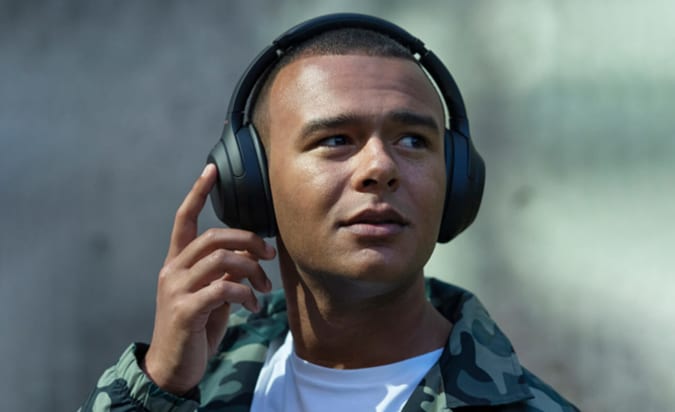
Sony
Almost anyone would benefit from a good pair of noise-canceling headphones, and once again we’re recommending Sony’s WH-1000XM4 as the best over-ear option on the market. At $350, they’re not cheap, but they offer a combination of incredible sound, refined design and excellent noise-canceling that is hard to beat. This latest model also has a number of smart software features like wear detection, which pauses playback when you take the headphones off. They can also connect to two devices simultaneously, a big missing feature from earlier models. They even fit better and more comfortably than ever.
Of course, not everyone wants to wear large, over-ear headphones when they’re out and about. That’s where Jabra’s Elite 7 Pro comes in. These noise-canceling earbuds are the successor to the flagship Jabra Elite 85t we recommended last year. And while we haven’t reviewed the Elite 7 Pro, Jabra’s track record makes us comfortable recommending these. They have a number of improvements over the Elite 85t, including nine hours of battery life with ANC activated, a major improvement over the 5.5 hours the Elite 85t were rated for. The Elite 7 Pro buds are also smaller than Jabra’s Elite 75t, which were previously the smallest buds the company made. Smaller earbuds are typically more comfortable to wear, and it’s impressive that Jabra managed to shrink the size and promise improved battery life.
If you’re buying earbuds for an Apple user, though, consider the Beats Fit Pro. They offer many of the same benefits as the AirPods Pro for $50 less. These features include one-touch pairing and easy switching between Apple devices, Spatial Audio, hands-free Siri and ANC. They also have a fit wing to help them stay put when you’re exercising, and have an IPX4 rating for water resistance, so sweat from a workout shouldn’t be a problem. In our testing, they provided well-balanced audio quality with punchy bass and impressive noise cancelation. Battery life isn’t quite as good as what Jabra promises with the Elite 7 Pro, but we got almost seven hours of usage in our review before we had to pop them back in the case.
Buy Sony WH-1000XM4 at Amazon – $348
Buy Jabra Elite 7 Pro at Amazon – $200
Buy Beats Fit Pro at Amazon -$200
Monitors
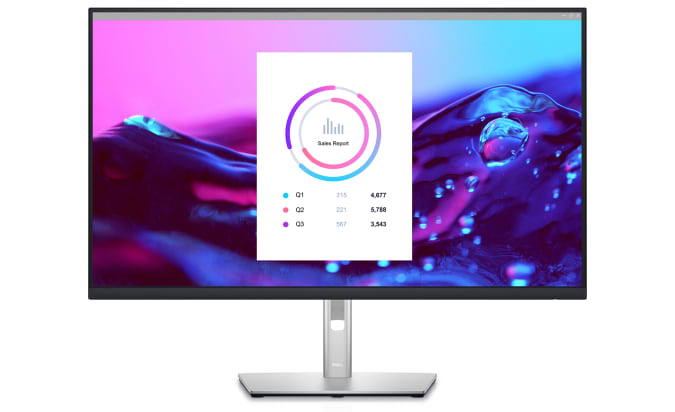
Dell
There are a dizzying number of monitors on the market, at basically any price point you can think of, which makes recommending a single monitor a very difficult task. But Dell reliably offers some of the best screens you can get at a reasonable price. With that in mind, we’re recommending Dell’s 32-inch 4K USB-C Hub Monitor (model number P3222QE). For $799, this monitor has basically everything you could want out of a display.
A 32-inch screen has become the sweet spot for a lot of people, offering a vast workspace without being overwhelmingly large, and a 4K resolution will make sure everything looks sharp. This screen only has a 60Hz refresh rate, so we wouldn’t recommend it if you’re keen on gaming, but it’s sufficient for everyday tasks. The monitor also has a ton of ports, including HDMI, Displayport, USB-C, and multiple USB-A connections. And the stand lets you adjust it to the right height and angle, something that’s a lot better than stacking books under a monitor.
If the Dell is a bit too expensive, ASUS has a couple solid options worth considering as well. The ASUS ProArt Display is a 27-inch screen that you can get in either 4K or quad-HD (2,560 x 1,400) resolution. The 4K screen currently costs $499 on Amazon, while the QHD model sells for $370. Obviously, it isn’t quite as large as the Dell, but it has most of the same amenities, including an adjustable stand and a host of ports.
Buy 32-inch P3222QE monitor at Dell – $799
Buy 27-inch ASUS ProArt Display at B&H – $319
Bags
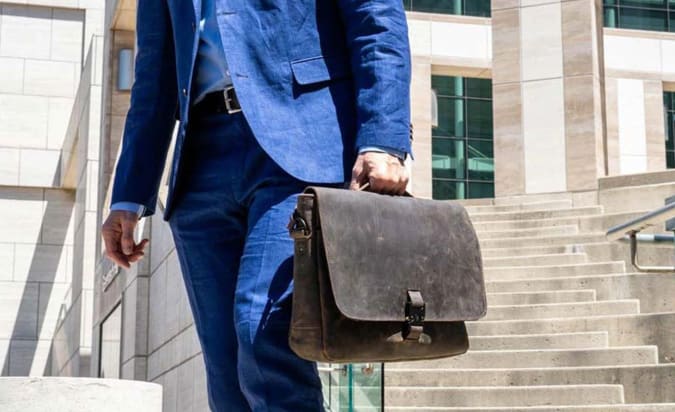
Waterfield
As important as the right gear is, your grad also deserves something classy and stylish to carry all that stuff around. The Executive Leather Messenger from Waterfield Designs is an expensive choice, but it’s worth the cost. Waterfield makes everything by hand in its San Francisco shop, and the materials it uses are top notch. I’ve owned a lot of their products over the years, and I can safely say this bag will last a decade or more, and the leather will only look more attractive as time goes on.
On the inside are two padded slots, one for a tablet and one for a laptop. There are also two pockets, one zippered, as well as a pen slot and a metal key fob. Finally, there are two easily-accessible hand pockets under the flap, both with an extremely soft plush lining. The Executive Leather Messenger comes in three different leather colors and costs either $380 or $400, depending on which size you choose. It’s an investment, for sure, but it will last a long time.
If you’d prefer a non-leather choice, Peak Design’s Everyday Messenger is a great and more affordable option. The $220 bag was originally designed for photographers, but (as the name implies) it works as a tough, well-designed option for whatever you need to carry. It has a dedicated 13-inch laptop sleeve and “stretchy” pockets that make it easier to keep track of smaller items. The bag also comes with a few flexible interior dividers so you can customize it in any way you want. The recently-released V2 update boasts 100 percent recycled outer fabric, a redesigned shoulder strap that should be less prone to slippage, a “MagLatch” magnetic buckle and a more efficient design that makes it 24 percent lighter than the original.
Buy Executive Leather Messenger at Waterfield – $399
Buy Everyday Messenger at Peak Design – $220
For all the latest Technology News Click Here
For the latest news and updates, follow us on Google News.
